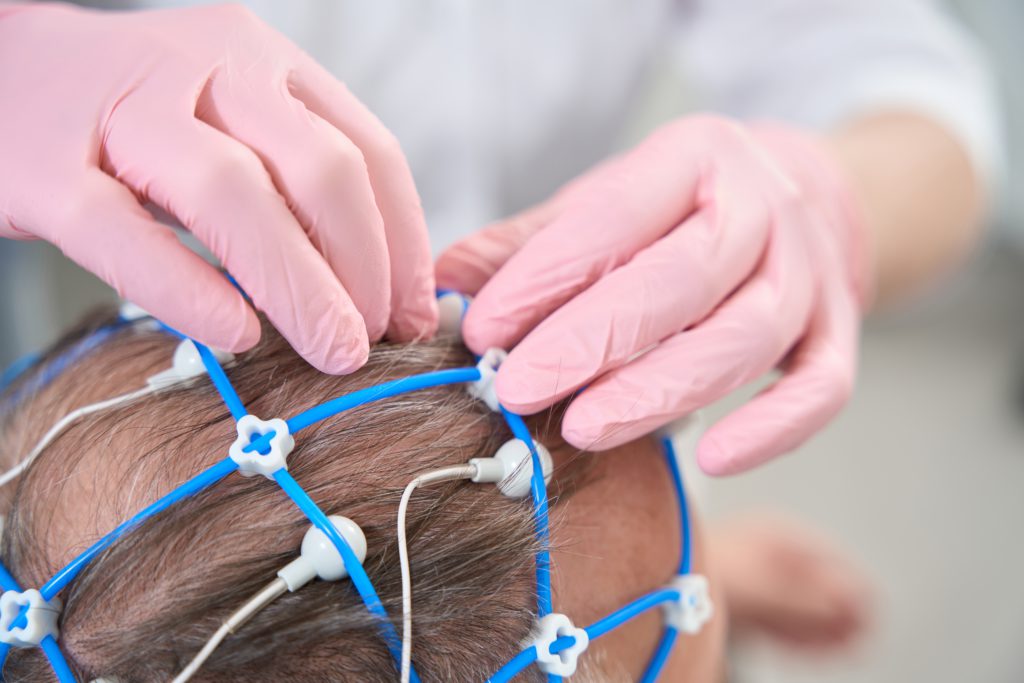- PT
- |
- EN

New Brazilian study used transcranial stimulation to regulate responses of the Autonomic Nervous System
Among the health problems developed or aggravated by Covid-19, those that affect neurological and respiratory functions draw special attention from specialists. Considering several studies that show the adverse effects of Covid-19 on human autonomic functions, which are those regulated by the Autonomic Nervous System (ANS), a recent Brazilian study has demonstrated that the use of non-invasive brain stimulation was capable of regulating the ANS and increasing the oxygen saturation in patients with Covid-19 admitted to a semi-intensive care unit.
“The ANS is the part of our nervous system that continually adjusts the organism’s activity to maintain the body’s internal balance, also known as homeostasis. The ANS is responsible for maintaining our vital functions and regulates, without our awareness, fundamental aspects of our body, such as heart rate, body temperature, blood pressure, the frequency we breathe, among others. An imbalance in this system can lead to changes in heart function, blood pressure control and has also been associated with increased inflammation in patients with Covid-19”, explains Dr. Erika Rodrigues, IDOR neuroscientist and study coordinator.
Considering that unwanted changes in the ANS had already been observed in the short and long-term phases of the Covid-19 infection, there is a challenge in identifying treatments capable of regularizing the autonomic functions after the infection and establishing the possibility of preventing and reducing complications of the disease. Unfortunately, even after years since the pandemic’s start, few therapeutic options can be combined with conventional treatments.
Recently published in the scientific journal Brain Stimulation, a Brazilian study led by researchers from the D’Or Institute for Research and Education (IDOR) investigated transcranial direct current stimulation (tDCS) efficacy and safety as a procedure to regulate the ANS function in patients with Covid-19. One of the greatest benefits of tDCS is its non-invasive and non-painful brain stimulation technique that uses a low-intensity electrical current to modulate neuronal activity in specific brain areas through surface electrodes positioned on the scalp.
To carry out the study, 40 patients hospitalized in semi-intensive care units due to covid-19 with mild to moderate symptoms were recruited, half of whom received a single session of tDCS, while the other 20 underwent a sham stimulation. The tDCS was applied with an electrostimulator through two surface electrodes aiming to modulate the activity of the dorsolateral prefrontal cortex. The prefrontal cortex is an area in the front of the brain defined as a target by researchers due to evidence of its involvement in the ANS regulation. In the control group, the participants received a fictitious stimulation (tDCS-sham) to be perceived as real stimulation by the patients.
The two groups did not differ regarding pre-existing illnesses, hospital admission symptoms, medications used during hospitalization, or length of stay. The authors also evaluated the safety of the stimulation by checking vital signs and the patients’ health condition before and after the stimulation and by applying a questionnaire of adverse effects to each patient.
The researchers observed that, in patients who received tDCS, there was a regulation of the ANS and an increase in their oxygen saturation, a factor that did not occur in the control group. “This result is very relevant, given that 70% of patients hospitalized for Covid-19 need oxygen support at some point”, emphasizes Dr. Erika Rodrigues. Furthermore, there were no significant differences between groups in the reports about the incidence and intensity of adverse effects, and none reported the occurrence of skin lesions or clinical worsening.
“Our results showed the stimulation was safe and well tolerated by the Covid-19 patients. We also identified that the stimulated brain region, the prefrontal cortex, seems to have activated neuronal pathways of the autonomic nervous system, which play an important role in inflammatory responses”, comments the study’s first author and researcher at IDOR, Dr. Talita Pinto.
The researchers observed that the real stimulation induced an increase in parasympathetic activity and a reduction in the sympathetic activity of the ANS, which can be highly beneficial for rebalancing the Autonomic Nervous System in patients with Covid-19 or other diseases, preventing impairment in various body organs and helping to control inflammatory processes.
This research is the first to report changes in the ANS generated by a single tDCS session focusing on the neuromodulation of the prefrontal cortex in patients hospitalized in the acute phase of Covid-19. Thereby tDCS presents itself as a promising, safe, and non-invasive method of additional therapy for treating complications generated by Covid-19 or similar diseases, such as autonomic and respiratory dysfunctions and exacerbated inflammatory processes.
“We believe that tDCS has a great potential for the prevention and recovery of complications from Covid-19 and similar diseases, as it is non-invasive, easy to apply, and has a relatively low cost”, informs Dr. Talita Pinto, “And it can also be a treatment for patients in the acute phase or even for those with sequelae that remain for long periods after the coronavirus infection” adds Dr. Erika Rodrigues.
The scientists comment that additional studies with a complete assessment of autonomic function and inflammatory biomarkers are still needed before the broad application of treatments with tDCS to Covid-19 patients.
Written by Maria Eduarda Ledo de Abreu.
05.05.2023